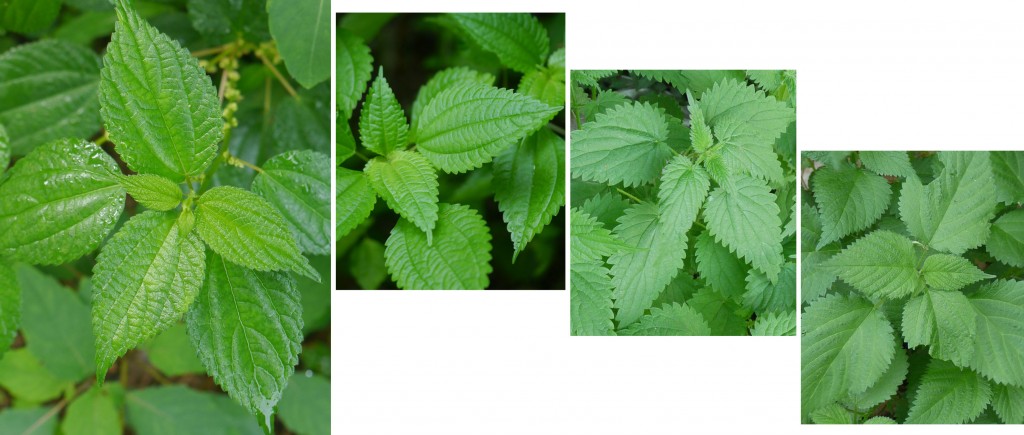 Here are four different plants with very similar leaves. (Click on the image to get a larger view with better details.) The leaves all have the same overall shape with coarsely toothed margins. The venation looks the same with each of the two left-most images and with the two right-most images. So what other differences are there to help with the identification of these plants?
Here are four different plants with very similar leaves. (Click on the image to get a larger view with better details.) The leaves all have the same overall shape with coarsely toothed margins. The venation looks the same with each of the two left-most images and with the two right-most images. So what other differences are there to help with the identification of these plants?
Looking at the leaf arrangement along the stem, we can see that the three plants on the left have an “opposite” leaf arrangement while the right-most plant has an “alternate” leaf arrangement.
Let’s check out the stems . . .
Aahh . . . now we can see some distinct differences! The two plants on the right have stinging hairs along their stems. These are Stinging nettle (Urtica dioica) and Wood nettle (Laportea canadensis). They are more closely compared in this previous post — along with Clearweed (Pilea pumila) — also a member of the nettle family. And, yes, that is Clearweed’s stem — second from the left.
For a last bit of four-way comparison, here are some of the inflorescences to be found on each of these four plants. The first image is of our “mystery” nettle.
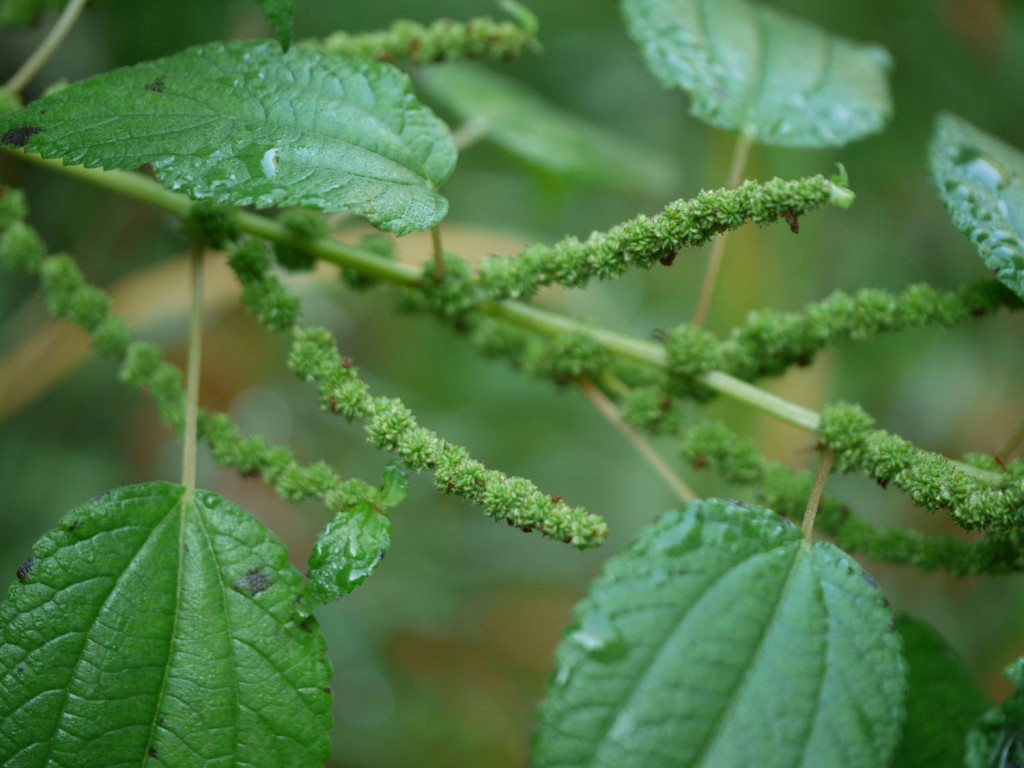 The next three are in the same order (left to right) as shown in the four-across photos previously.
The next three are in the same order (left to right) as shown in the four-across photos previously.
The fourth nettle (the left-most image in the four-across groupings above) is called False nettle. The inflorescence shape is reflected in its scientific name — Boehmeria cylindrica — as the flowers are grouped in cylindrical shapes along the stem. Here are some closer views of the False nettle inflorescence. Notice the new leaf growing at the end of the inflorescence’s peduncle (stem) — a common occurrence.

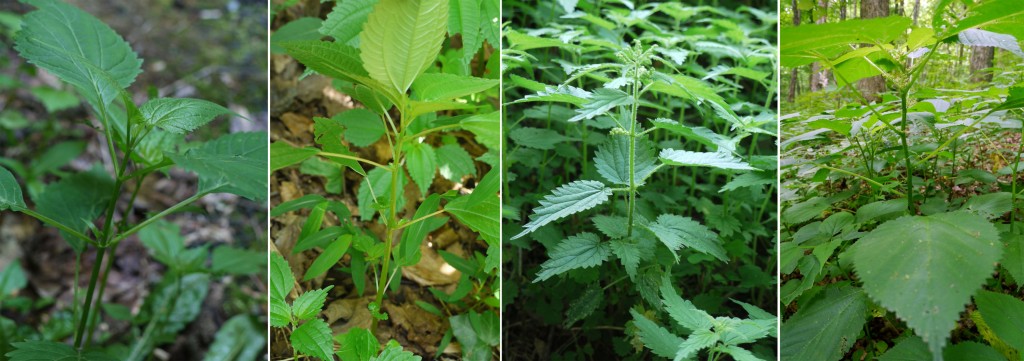
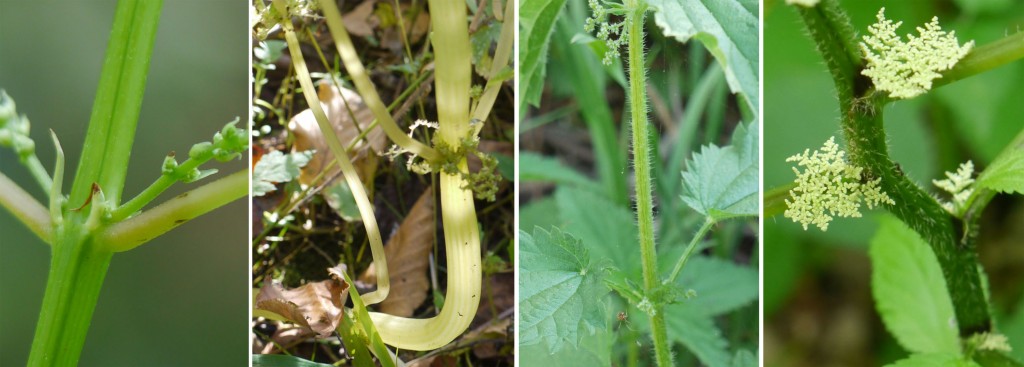

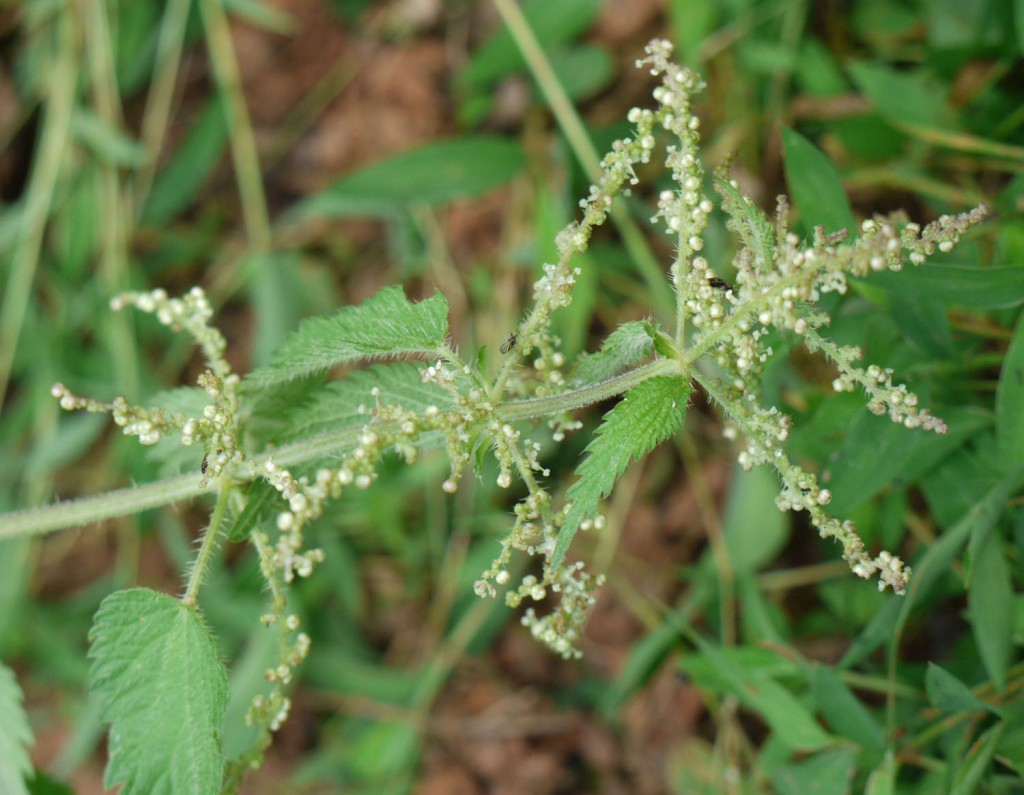
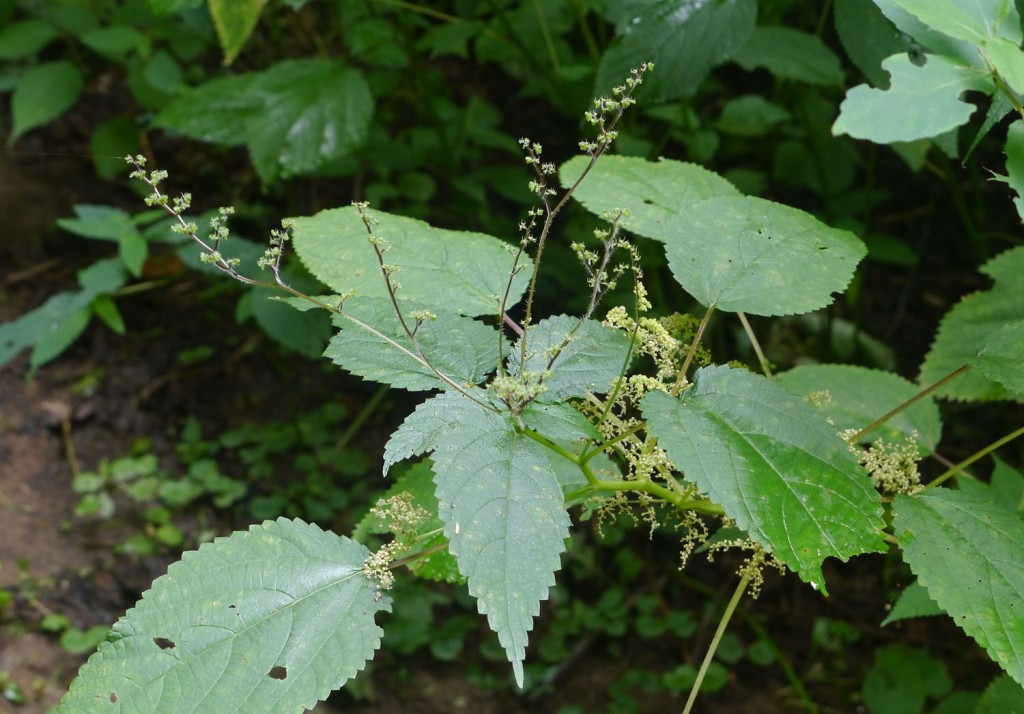
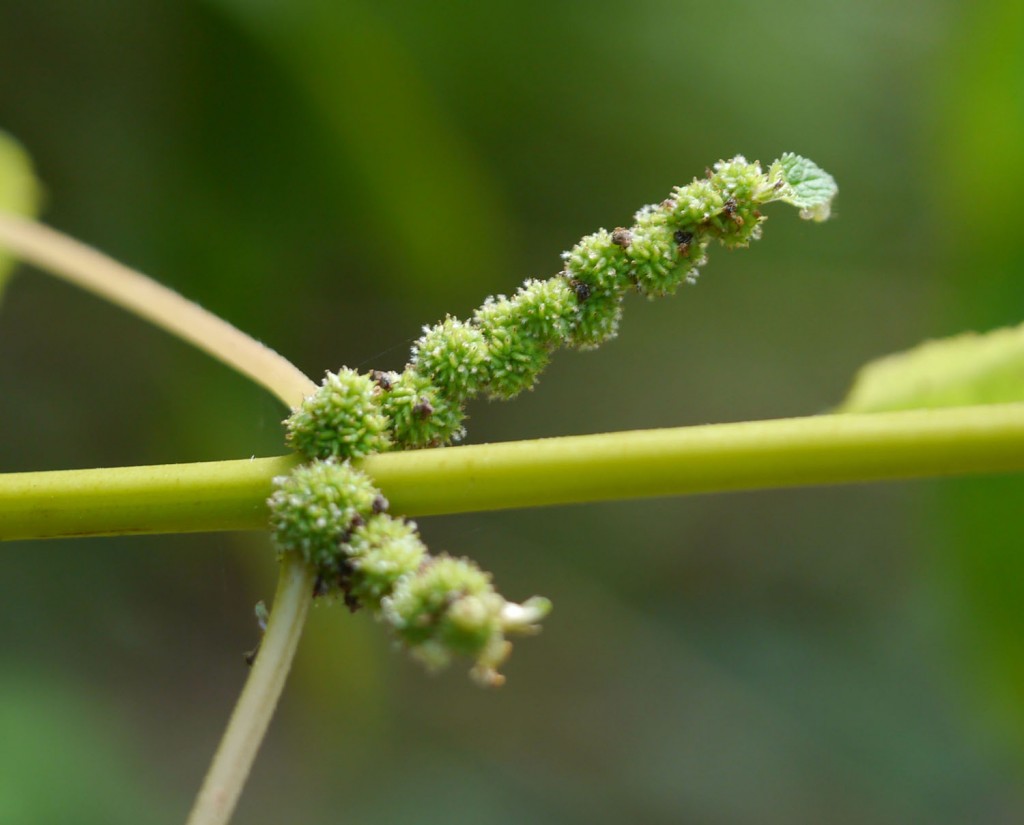
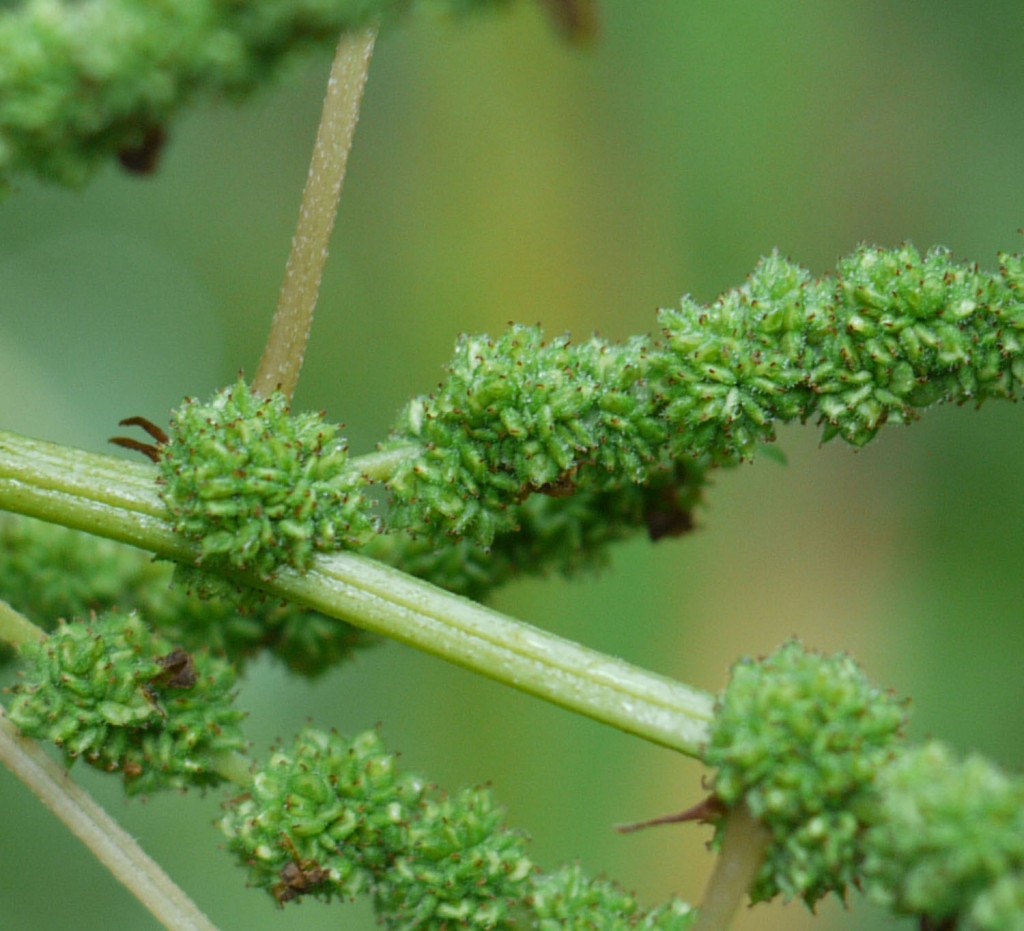
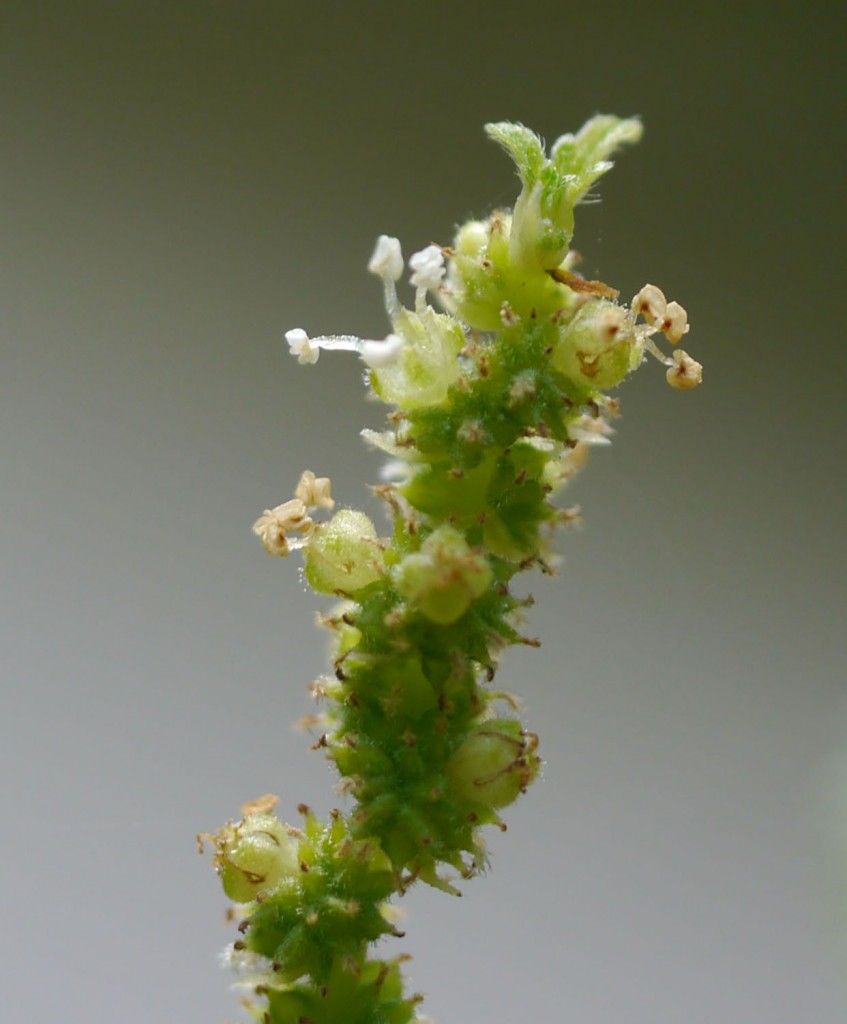
Pingback: Three members of the Nettle Family | Identify that Plant
Thank you for this well stated, instructional post. I have seen all four of the nettle species mentioned in NW GA (at least I think I have!) and I grow Urtica dioica for my own use. These easy to recognize distinguishing characteristics will be very helpful id tools!
i am trying to identify a plant that has nettle shaped leaves 3-4 ft high has florets of bright yellow nettle shaped flowers in rings going up the stem sedding
I suggest using a good field guide to local herbaceous plants. Be sure to look for the plant’s characteristics such as leaf arrangement, specific leaf shape, number of flower petals, flower arrangement (sounds “whorled” from your description here), etc. Another possibility is to search some of the websites listed under Plant ID resources — Websites on the navigation bar (above). Or you can “google” a set of characteristics, which may start you in a helpful direction.
Pingback: Stinging Nettle | not your typical hippie
Thank you for the information. One question. I love and eat stinging nettle. Are all the other nettles edible? Thank you!
Wood nettle is just as edible as stinging nettle. In fact, it is one of my preferred wild edibles.
Pingback: History, Identification, & Uses of Stinging Nettle
Pingback: History, Identification, & Uses of Stinging Nettle
Are False Nettles edible?
I do not know. You’ll need to research that and ask a reputable wild foods forager.
Pingback: Stinging Nettle – Our Herbal Heritage
Pingback: Stinging Nettle - Our Herbal Heritage